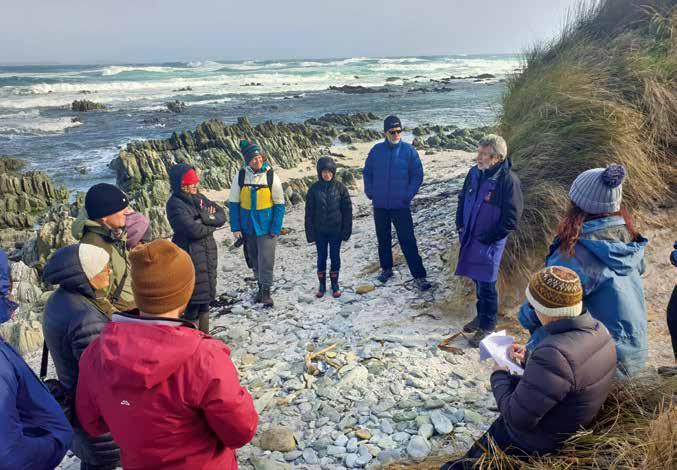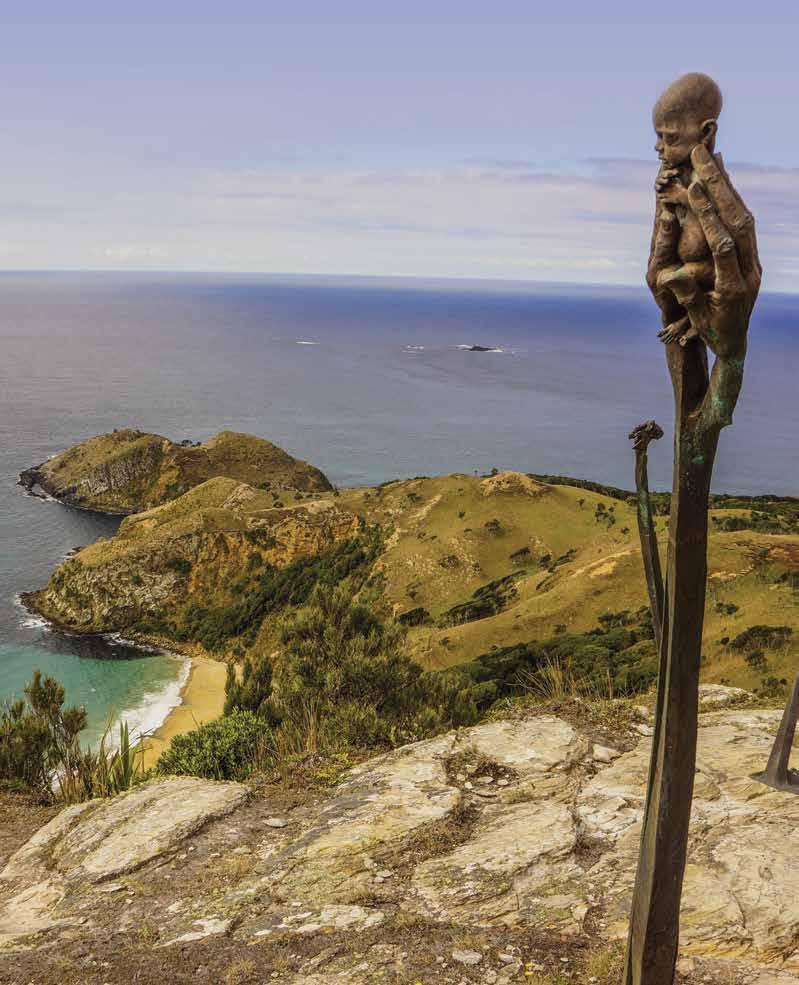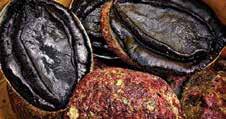
6 minute read
SCIENTIFICALLY SPEAKING
Here’s a pop quiz. Which part of Aotearoa New Zealand hosted the first of our joint scientific expeditions with America and currently has earthquake and tsunami monitoring sites, instruments keeping an eye on the global nuclear test ban, a French research facility, and a rocket tracking station. If you guessed the Chatham Islands, then yay you, but if not, don’t feel too bad; and either way, keep on reading as we look at one of the Chatham’s best kept secrets.
The Chatham Islands are famous for many things - seafood, a rich cultural history, and beautiful landscapes to name a few - but a new annual festival aims to put it back on the map where it belongs at the leading edge of scientific research. Now in its second year, the Chatham Islands Festival of Science aims to draw locals and visitors alike to come and enjoy science inspired events including talks, field visits and panels with world renowned scientists, covering everything from ecology, weather and geology to the future of our environment. And we use the phrase ‘back on the map’ carefully - because it is a little known fact that the Chatham Islands has been a focus for scientific research for nearly 150 years.
Advertisement
“In terms of western science from the 1840s and 1870s,” says Professor David Johnston of Massey University, “there has been much more happening on the Chatham Islands than people realise. It has been something of a global focus for science, right up till now, and quite a mix of scientific research, both in terms of on the Chathams because it is the most stable part of the continent we now know as Zealandia, and also because of its unique nature and of course the weather monitoring that goes on there.”


Above: The station and observatory of the 1874 American expedition to Chatham Islands.
Image source Cambridge University Library and Library Company of Philadelphia
“Currently on the Island we have NZ Geonet earthquake and tsunami monitoring equipment, the Pacific Tsunami Warning Centre has a gauge out there, the French have a geodetic station, radiation is monitored as part of the Nuclear Test Ban Treaty, and a whole lot of related instrumentation. In addition, from a commercial point of view, Rocket Lab has their tracking station out there, so there is a lot of scientific activity going on there, but then there has always been a long history of science on the Island.”
One of the earliest and most prominent of these was an international effort to observe the transit of Venus - an occurrence which is historically of great scientific importance as they were used to gain the first realistic estimates of the size of the Solar System.
“In 1874 there was a global effort to study the transit,” Professor Johnston says, “and the French, the Germans, the British and the United States all set up observatories in Aotearoa New Zealand. Some went to Campbell or the Auckland Islands, but the Americans set up a station on the Chatham Islands and Queenstown, marking the first instance of bilateral scientific cooperation between our two countries - something that has continued to this day.”
“What makes it important is that as a fledgling nation it showed that we were coming of age and engaging in world science and being a part of the global science community. And it’s important to remember that the United States was also a young nation then - it was just after the American Civil War - and we were both emerging nations that were finding our feet internationally and dealing with the old world - who of course weren’t always completely open to input from the new world!”
As part of activities marking the 150th anniversary of the expedition in 2024, it is hoped an archaeological survey can be carried out on the site of the station at Port Hutt, and it is also hoped that a dig can be organised in the coming years. “For the Chatham Islanders,” says Professor Johnston, “the arrival of the expedition led to a lot of curiosity, but relations were good despite - or perhaps because of - there being two very different worlds colliding.”
The establishment of the Festival of Science has proven to be perfect timing. “The Festival was initially conceived to make the most of a period in winter when visitor numbers were low, but it is also the opportunity to tell a story of the Islands that is usually overlooked. They are rightly famous for birds and crayfish and seafood, but this is an aspect of the Islands that almost no one knows about. We’ve had a great response from the scientific community, and we’re reaching out to the US Navy and the American Embassy. We’ve also had huge support from Otago Museum and others from quite a variety of different sectors - honey for example - and we want to keep linking new things into it. We’re basically trying to bring the world to a small island!”
Which is how it has been for many, many years, and long may it last.
Scenes from the first Chatham Islands Festival of Science

Important Information for Visitors
The Islands are a place where you will enjoy many different activities. Nature, history, culture, fishing, walks and hikes, photography, art and craft, isolated beaches and bird watching. Here are a few key things Tourism Chatham Islands would like you to know before you arrive.
Respecting the Local Kai Moana Resource
The Chatham Islands are renowned for their abundant seafood. Help us preserve this valuable resource by taking only what you need for a meal and purchase fish to take home from the local factories.

Please leave the paua beds for the locals. They are an important local food source and resource that we don’t want to see depleted. You can enjoy lots of quality Chatham Islands seafood on the menus here on the islands.

Voluntary Visitor Levy - $25 per visitor
To assist enhancing the visitor experience, particularly infrastructure, we encourage all visitors to make a donation of $25 directly to Tourism Chatham Islands:
ANZ Account: 06 0845 00796434 002 Particulars: Your name Reference: Donation Private Land Access and Signage
Unlike mainland New Zealand, most of the island, including the beaches, is privately owned land. Most attractions are on private land and access to them requires permission and payment of an entry fee. This must be prearranged and your host will be able to assist. Visitors are asked not to venture onto any private land without permission.
Natural and Archaeological Taonga The Chatham Islands are rich in flora and fauna, geological and archaeological treasures – for example native birds, fossils (including shark teeth), and sites related to Moriori settlement, all of which are protected by law. These also hold special value to Islanders. Please respect these by not removing any items you find.
Water Conservation Water is often in short supply and restrictions are put in place, particularly in summer. Please help us to conserve it when showering, flushing etc.

